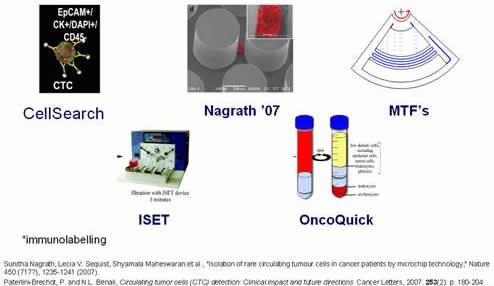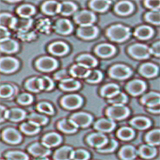Circulating tumor cells via Microfluidics
Metastasis to vital organs is among the most life threatening cause to cancer patients. Hence, it is crucial to prevent metastasis. Applying microfluidic platform and different separation/detection strategies, we are working on a more economical screening/diagnosis with early alert than conventional choices. Better understanding on collected tumor cells in circulation system may promote the development of novel detection techniques and appropriate cancer therapy. Circulating turmor cells (CTC) has been linked to metastatic stage of cancer. CTC's are rare in peripheral blood and extremely difficult to collect without damaging them, yet they are intermediates from in-situ tumors to metastatic sites. Most of CTC is dormant. However, some are proliferative and grow as cluster, called circulating tumor microembolus (CTM). This makes CTM more dangerous than CTC. Clinical Utility of CTC/CTM includes: early diagnosis, targeted therapy, efficacy of treatment, detection of CTC in cancer dormancy, prognostication, and etc[1].The goal of this work is to design, fabricate, and test a microfluidic platform for detection and collection of CTC in breast cancer patients. Our goal is as three-fold: (1) Design, fabricate, and test the microfluidic device; (2) Detect and collect CTC from breast cancer patients and study immunological and mechanical properties of CTC; (3) Optimize device for wide clinical usage.

Figure 1: Relative techniques of examining CTC.

Figure2: Cell observation under the microscope.
References
- Sher, Y.P., et al., Human kallikrein 8 protease confers a favorable clinical outcome in non-small cell lung cancer by suppressing tumor cell invasiveness. Cancer Research, 2006. 66(24): p. 11763-11770.
- Chen, C.C., et al., Combination of multiple mRNA markers (PTTG1, survivin, UbcH10 and TK1) in the diagnosis of Taiwanese patients with breast cancer by membrane array. Oncology, 2006. 70(6): p. 438-446.
- http://proj.ncku.edu.tw/esoc/information03.htm